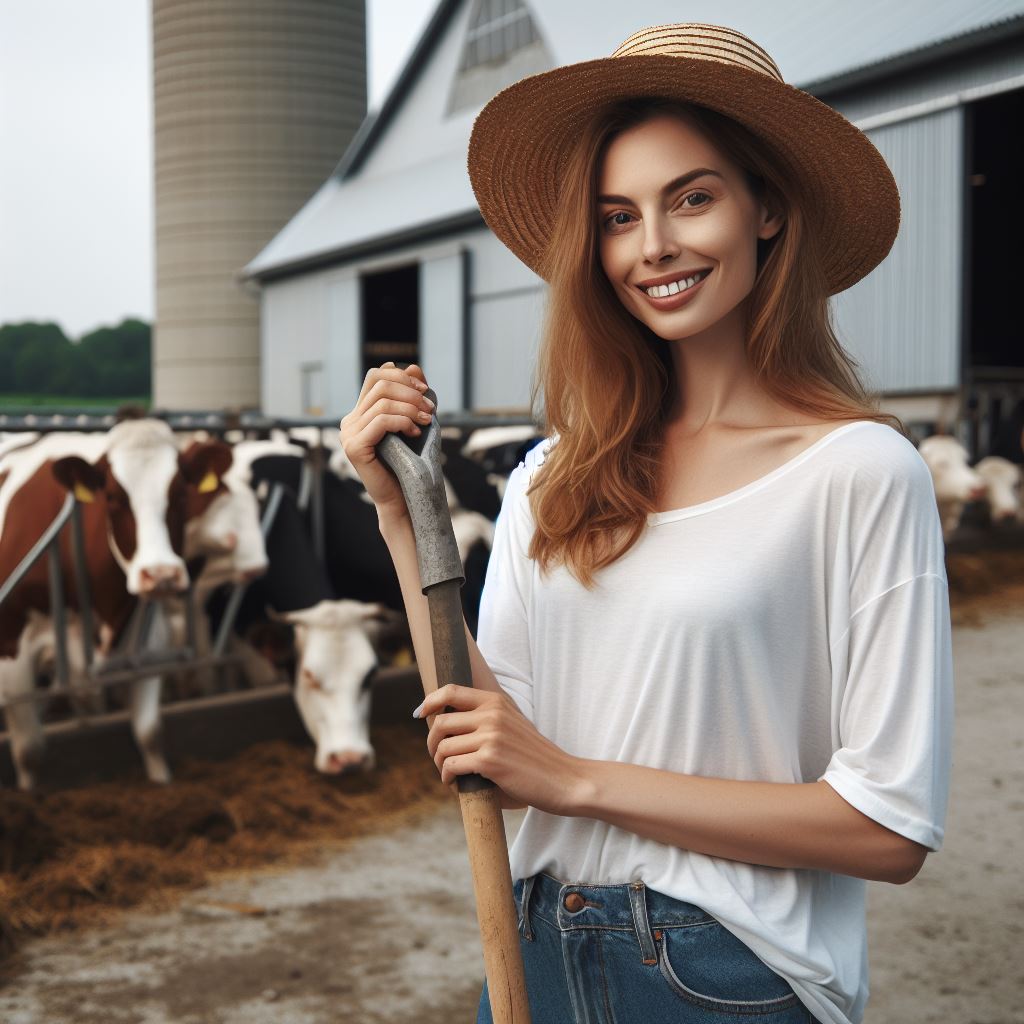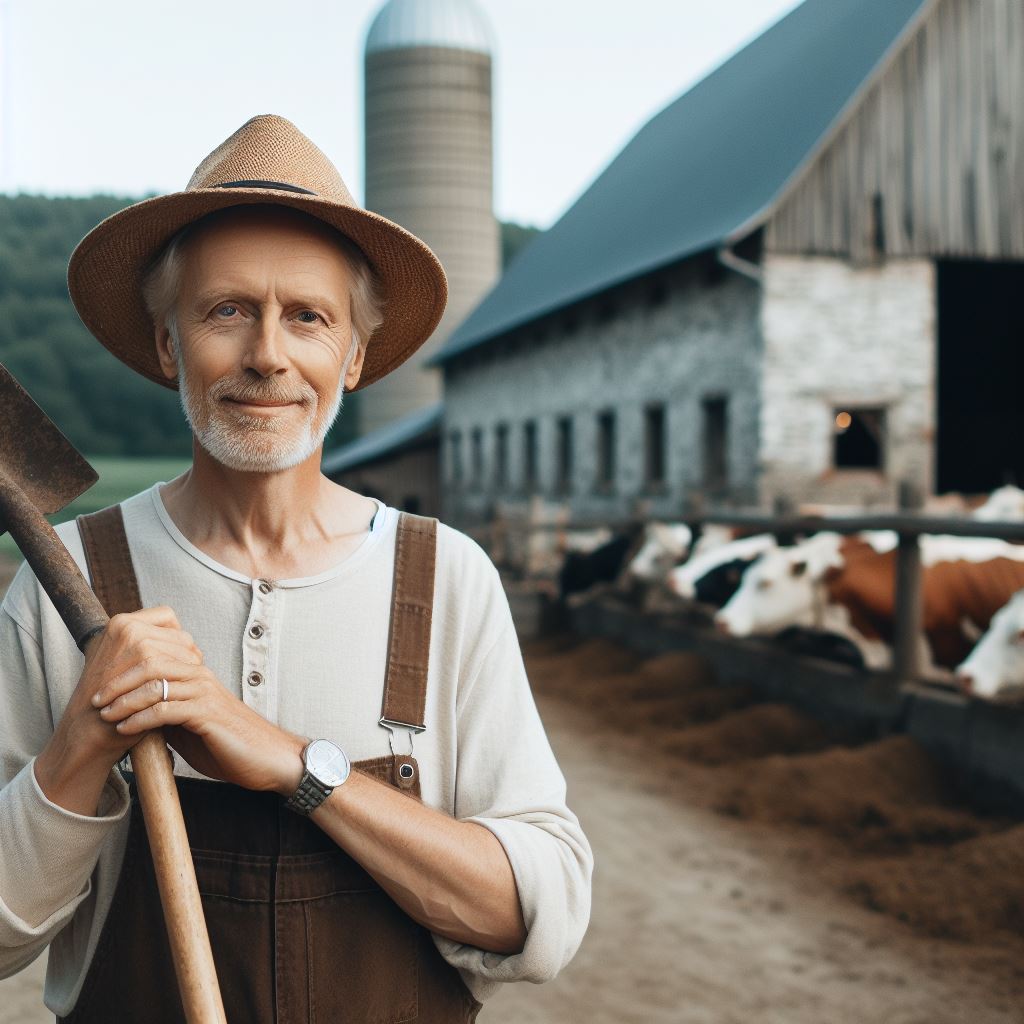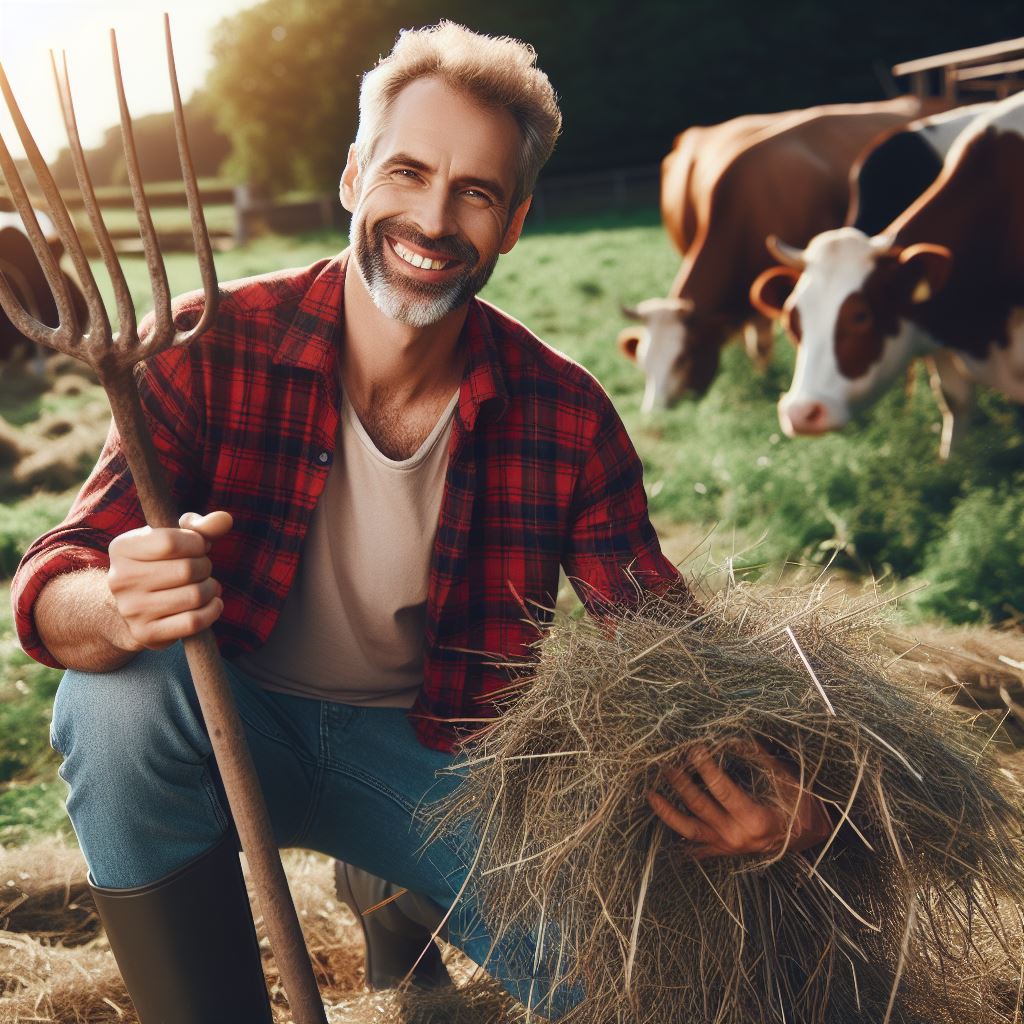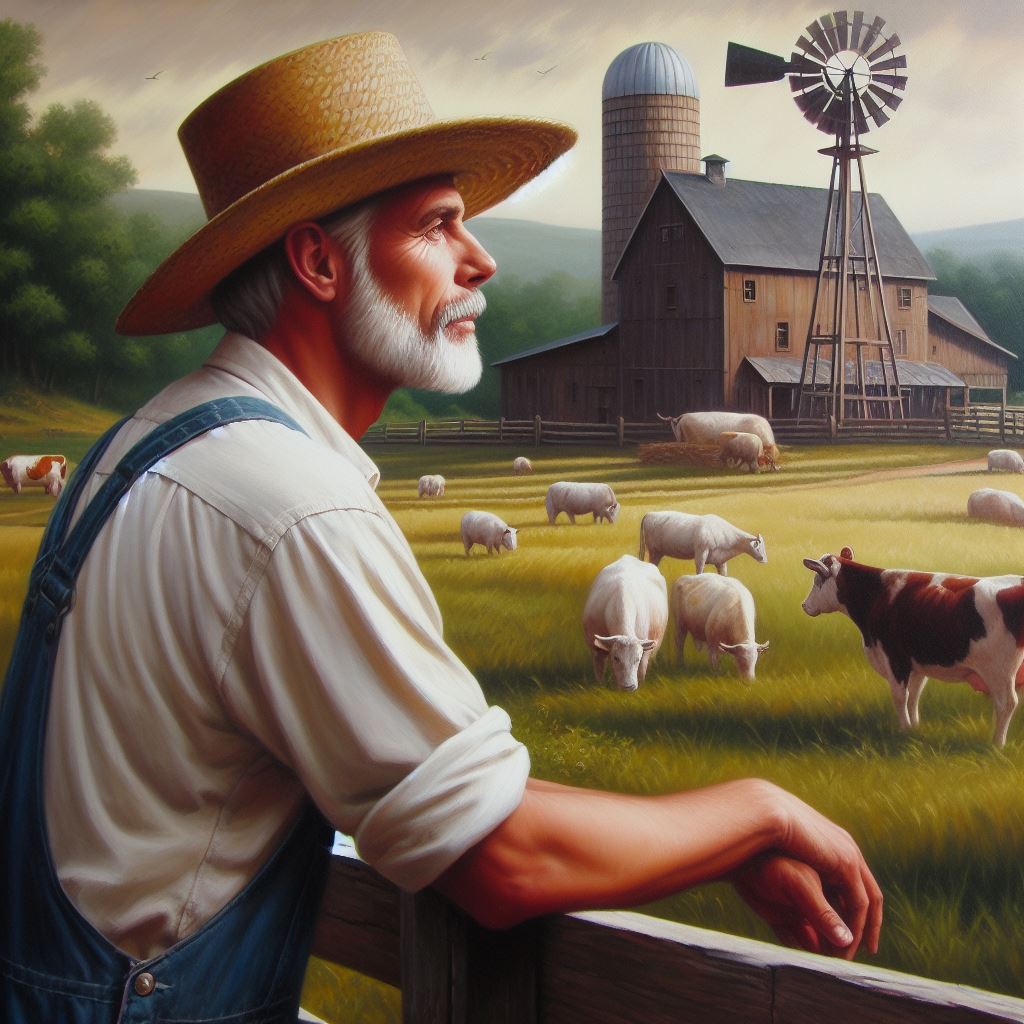Introduction
Let’s explore Deer Farming Genetics for Antlers.
Deer farming and genetics for superior antlers
Deer farming is an important industry that focuses on breeding deer with superior antlers.
Genetic breeding practices are crucial in producing such deer.
Superior antlers are highly valued in the deer farming industry for various purposes such as hunting, trophy displays, and venison production.
Deer farming involves the controlled breeding of deer species to produce offspring with desirable traits, one of which is superior antlers.
Antlers are not only used for defense and territorial displays but also as a marketable asset.
The size, shape, and symmetry of antlers determine their value in the industry.
Importance and relevance of deer farming
Genetics play a vital role in deer farming as it determines the heritability of traits like antler size and shape.
Breeders selectively mate individuals with desirable genetic traits to produce offspring with even better antlers.
This selective breeding process allows for continuous improvement in antler genetics.
Through advanced genetic technologies and breeding techniques, farmers can identify and select breeding stock with superior antler genetics.
DNA testing and genetic markers help in predicting antler size and development potential in deer.
This allows farmers to choose the best breeding pairs to maximize genetic potential.
Thesis statement: Genetic breeding practices play a crucial role in producing deer with superior antlers in the deer farming industry
The breeding practices employed in deer farming reflect the importance and relevance of genetic improvement.
By using active selection methods, farmers aim to enhance the genetic diversity and quality of the deer population.
Transform Your Agribusiness
Unlock your farm's potential with expert advice tailored to your needs. Get actionable steps that drive real results.
Get StartedThis not only benefits the deer farming industry but also helps conserve and protect genetic resources.
In general, genetic breeding practices play a crucial role in producing deer with superior antlers in the deer farming industry.
The importance and relevance of deer farming are evident in the market demand for deer with impressive antlers.
Advanced genetic technologies and selective breeding techniques contribute to continuous improvement and genetic diversity in the industry.
Understanding Deer Farming
In this section, we will delve into the world of deer farming, exploring its definition, purpose, and the different species commonly used in this industry.
We will also discuss the size and economic significance of the deer farming industry and its potential for antler production.
Definition and Purpose of Deer Farming
Deer farming refers to the captive breeding and rearing of deer species for various purposes, including meat, hides, velvet antlers, and trophy antlers.
The primary objective of deer farming is to produce quality deer products for commercial purposes.
Different Species of Deer Commonly Used in Deer Farming
Several deer species are commonly raised in deer farming operations.
These include the white-tailed deer (Odocoileus virginianus), red deer (Cervus elaphus), fallow deer (Dama dama), and elk (Cervus canadensis).
Each species has unique characteristics and market demand.
Overview of the Deer Farming Industry
The deer farming industry has experienced significant growth in recent years.
In terms of size, deer farms can range from small family-owned operations to large-scale commercial enterprises.
The industry’s economic significance is attributed to the demand for deer products worldwide.
Economic Significance of Deer Farming
Deer farming plays a crucial role in rural economies, providing employment opportunities and generating revenue through the sale of deer products.
The industry contributes to local economies and stimulates tourism in areas where deer farming is prevalent.
Potential of Deer Farming for Antler Production
One of the most remarkable aspects of deer farming is its potential for antler production.
Antlers are highly valued for their use in various industries, such as traditional Chinese medicine, velveting, and the production of ornamental items.
Deer farmers selectively breed deer with superior genetics to enhance the antler growth potential in their herds.
Genetic factors, such as age, nutrition, and overall health, also influence antler development.
The goal is to produce deer with larger, symmetrical, and more impressive antlers.
The antler velvet, which is the developing antler in a pre-calcified stage, is a particularly valuable component for its medicinal and aphrodisiac properties.
The demand for velvet antler from deer farms has steadily increased in recent years.
Deer farming is an intricate and specialized industry that requires knowledge of deer biology, genetics, and management practices.
Showcase Your Farming Business
Publish your professional farming services profile on our blog for a one-time fee of $200 and reach a dedicated audience of farmers and agribusiness owners.
Publish Your ProfileIt involves careful monitoring of deer health, nutrition, and ensuring suitable breeding conditions.
Therefore, deer farming encompasses the captive breeding and rearing of various deer species for commercial purposes.
It is an industry with significant economic importance and tremendous potential for antler production, particularly in the case of velvet antlers.
Deer farmers play a vital role in meeting the demand for deer products while ensuring the sustainable management of deer populations.
Read: Optimal Goat Feed: Balancing Nutrition and Health
Genetic Factors for Superior Antlers
Antler development is influenced by genetic factors, which play a crucial role in determining their size, shape, and strength.
It is important to choose bucks with excellent antler characteristics and does with genetic potential for producing offspring with superior antlers.
Explanation of the genetic component in antler development
Genetics contribute to the overall potential of a deer to grow exceptional antlers.
Different genetic components affect antler development, including genes related to nutrition, testosterone production, and growth rate.
Genes control the process of antler growth by regulating the production and deposition of nutrients.
By identifying successful genetic lineages, farmers can continue to selectively breed deer with superior antler genetics, building on their previous achievements.
Nutrition, age, health, and environmental factors also influence antler growth along with genetic predisposition.
Role of genetics in determining the antler size, shape, and strength
These genetic elements determine the size, shape, branching patterns, and even the number of tines on a deer’s antlers.
Providing a balanced diet with optimal nutrition is vital in helping deer fulfill their genetic potential for antler development.
Deer require essential minerals, vitamins, and proteins to support antler growth during the developmental stages.
Mention of selective breeding as a strategy to enhance genetic traits
Selective breeding is a practical strategy used by deer farmers to enhance desirable genetic traits in antler development.
By selecting breeding pairs with superior antlers, farmers can influence the genetic potential of their deer herd.
Through selective breeding, deer farmers can gradually improve the overall genetic quality of their herd’s antlers over generations.
Breeding programs focus on identifying deer with exceptional antler characteristics and using them as breeding stock.
Over time, this selective process results in deer with larger, stronger, and more symmetrical antlers.
By understanding the genetic component of antler development, farmers can make informed breeding decisions to achieve their desired outcomes.
However, it is essential to note that genetics alone do not guarantee the growth of superior antlers.
Accurate record-keeping and tracking of breeding attributes are valuable tools for deer farmers to analyze the success of their genetic breeding programs.
Monitoring the antler characteristics of offspring will help farmers identify which genetic traits are being passed down effectively.
Lastly, the genetic component is crucial in determining superior antler characteristics in deer.
Selective breeding allows farmers to enhance desired genetic traits, gradually improving antler quality over generations.
While genetics play a significant role, other factors such as nutrition and environment also influence antler development.
By understanding these genetic factors and incorporating them into breeding programs, farmers can strive towards breeding deer with exceptional antlers.
Read: Best Feed Types for Beef Cattle: A Nutritional Guide
Selective Breeding Practices in Deer Farming
In the world of deer farming, selective breeding plays a crucial role in achieving superior antler genetics.
This section will delve into the definition, purpose, methods, and successful examples of selective breeding in deer farming.
Definition and Purpose of Selective Breeding
- Selective breeding is the controlled mating of deer with desirable traits to ensure their offspring inherit those traits.
- The purpose of selective breeding in deer farming is to improve antler size, symmetry, mass, and overall genetic quality.
- By selectively breeding deer, farmers can create a line of superior individuals with desirable genetic traits for antler development.
- This process aims to accelerate the genetic progress and maximize the potential of deer antlers.
Methods Used for Selective Breeding in Deer Farming
- Deer farmers employ various methods to achieve selective breeding, including artificial insemination, natural mating, and embryo transfer.
- Artificial insemination allows farmers to control specific genetic combinations by collecting semen from superior bucks and inseminating does.
- Natural mating involves selectively releasing superior bucks into breeding pens with high-quality does.
- Embryo transfer allows the transfer of embryos from genetically superior does to recipient does, ensuring the propagation of desired genetics.
Importance of Pedigree Analysis and Selection of Superior Deer
- Pedigree analysis is crucial in selective breeding as it helps identify superior deer with desirable genetic traits.
- By examining the pedigree records of deer, farmers can assess the heritability and potential offspring quality.
- Selecting superior deer with superior genetics is vital to achieving the desired genetic traits in future generations.
- A thorough analysis of pedigrees ensures the selection of deer with high antler growth potential.
Successful Examples of Selective Breeding Programs
- The Texas Deer Association’s Selective Breeding Program has been highly successful in enhancing antler genetics.
- Using extensive pedigree analysis and superior buck selection, the program has produced deer with exceptional antler characteristics.
- The program focuses on genetic traits such as beam length, tine count, and spread to continually improve antler quality.
- Another successful example is the Whitetail Deer Conservation and Research Center’s selective breeding program, which aims to preserve and enhance genetic diversity.
- By selectively breeding for unique genetic markers, the center protects endangered genetic variations within the whitetail deer population.
Therefore, selective breeding practices in deer farming are essential for achieving superior antlers.
Through careful pedigree analysis, selection of superior deer, and the use of various breeding methods, farmers can enhance genetic traits and accelerate antler growth.
Successful examples of selective breeding programs further highlight the potential for achieving exceptional antler genetics through these practices.
Read: Duck Health Management & Disease Control

Benefits and Challenges of Genetic Breeding in Deer Farming
Advantages of Genetic Breeding in Deer Farming, Focusing on Superior Antlers
- Superior Antler Growth: Genetic breeding allows deer farmers to selectively breed individuals with superior antler traits, resulting in improved antler growth and quality.
- Enhanced Genetics: Through careful selection and breeding, deer farmers can develop deer with genetic traits that are highly desirable, such as increased antler size, mass, and symmetry.
- Increased Trophy Potential: Breeding for superior antlers enhances the trophy potential of deer, attracting hunters and increasing the value of hunting leases.
- Improved Herd Management: Genetic breeding enables deer farmers to manage their herds more effectively by culling deer with undesirable traits and focusing on breeding individuals with superior genetics.
- Conservation Efforts: By breeding deer with superior genetic traits, deer farmers actively contribute to the conservation of certain deer populations, ensuring the survival and perpetuation of desirable traits.
Increased Market Value and Demand for Deer with Superior Genetic Traits
- Lucrative Hunting Industry: The demand for trophy-sized deer with superior antlers creates a lucrative market for deer farmers who can supply these coveted animals.
- Trophy Hunting Opportunities: Farms that specialize in breeding deer with superior genetic traits can attract hunters willing to pay a premium for the chance to harvest an impressive trophy buck.
- Hunting Lease Value: The presence of deer with superior antlers increases the value of hunting leases, as hunters are willing to pay more for the opportunity to pursue these prized animals.
- Antler Product Industry: The demand for deer antler products, such as velvet antler supplements, boosts the market value of deer with superior genetic traits.
- Tourist Attraction: Farms that showcase deer with exceptional antlers can become tourist attractions, attracting visitors who are eager to see these magnificent animals up close.
Challenges and Limitations Faced by Deer Farmers in Genetic Breeding
- Genetic Variation: Achieving consistent and predictable results in genetic breeding is challenging due to the natural variation in deer genetics.
- Long Breeding Process: It takes several years to see the full potential of genetic breeding, requiring patience and commitment from deer farmers.
- Financial Investment: Establishing a breeding program focused on superior antlers requires significant financial investment in purchasing high-quality breeding stock and maintaining proper facilities.
- Limited Gene Pool: The limited number of deer with exceptional genetic traits poses challenges in broadening the gene pool, increasing the risk of inbreeding.
- Health and Disease Management: Focusing solely on genetic traits may result in neglecting overall health and disease resistance, requiring careful monitoring and management.
Ethical Considerations Associated with Intense Genetic Manipulation in Deer Farming
- Questionable Animal Welfare: The intense genetic manipulation involved in breeding for superior antlers raises concerns about the welfare and well-being of the deer involved.
- Genetic Modification vs. Natural Processes: Genetic breeding can be seen as unnatural, interfering with the natural evolutionary processes and genetic diversity of the deer population.
- Loss of Natural Selection: Intense genetic manipulation may diminish the role of natural selection, potentially reducing the adaptive capabilities of the deer population.
- Genetic Uniformity: Focusing solely on superior genetic traits can lead to a loss of diversity within the deer population, making it more susceptible to diseases or environmental changes.
- Moral and Aesthetic Considerations: Some may argue that manipulating genetics solely for trophy characteristics disregards the intrinsic value of animals and prioritizes aesthetic appeal over ethical considerations.
Generally, genetic breeding in deer farming offers numerous benefits in terms of superior antlers, increased market value, and improved herd management.
However, it also presents challenges such as genetic variation, limited gene pools, and ethical considerations.
Finding a balance between genetic enhancement and ethical practices remains a key consideration for deer farmers.
Read: 3 Top Smart Feeders for Efficient Cattle Rearing
Future Trends and Developments
Emerging advancements in genetic technology for deer farming
- Genetic technology is rapidly advancing in the field of deer farming.
- Researchers are exploring new ways to enhance antler growth through genetic manipulation.
- This could revolutionize the deer farming industry by producing superior antlered deer.
- Advanced genetic techniques may allow farmers to selectively breed for desirable traits.
- DNA markers can help identify the genes responsible for antler development and growth.
- By understanding these genes, farmers can make informed breeding decisions to improve antlers.
- Genomic selection can also be utilized to predict an individual deer’s genetic potential for antler growth.
- These developments enable breeders to focus on deer with superior genetic profiles for antlers.
- Genetic technology has the potential to significantly impact the future of deer farming.
Potential genetic engineering techniques to enhance antler growth
- Genetic engineering holds promise for enhancing antler growth in deer farming.
- Scientists are exploring the possibility of introducing specific genes into deer embryos.
- This could lead to the development of deer with larger, stronger, and more impressive antlers.
- Techniques such as gene editing using CRISPR-Cas9 offer precise control over gene modifications.
- By targeting genes associated with antler growth, researchers can potentially enhance this trait.
- Genetic engineering may also offer opportunities to manipulate antler development during different stages.
- Controlling the timing and size of antler growth could lead to more desirable and profitable deer breeds.
- However, extensive research and careful consideration of ethical implications are necessary before widespread implementation.
Possible implications and debates surrounding the use of genetic engineering in deer farming
- The use of genetic engineering in deer farming raises several important debates and implications.
- Critics argue that manipulating genes for antler growth may compromise the natural diversity of deer populations.
- There are concerns about unforeseen consequences and unintended effects on the overall health and behavior of deer.
- Ethical considerations regarding the welfare of genetically modified deer also come into play.
- The potential for genetic engineering to widen the gap between small and large deer farming operations is another concern.
- It is crucial to establish regulations and oversight to ensure responsible genetic engineering practices.
- Public perception and consumer acceptance of genetically modified deer products are also significant factors to consider.
- Transparency and clear labeling will be essential to address any concerns and inform consumers about genetically modified deer.
- Engaging in open dialogue and involving stakeholders in decision-making processes can help navigate these debates.
Most importantly, the future of deer farming is poised to benefit from emerging genetic advancements.
Showcase Your Farming Business
Publish your professional farming services profile on our blog for a one-time fee of $200 and reach a dedicated audience of farmers and agribusiness owners.
Publish Your ProfileThese technologies offer the potential to enhance antler growth and produce superior deer breeds.
However, careful exploration, ethical considerations, and robust regulations are necessary to address concerns and ensure responsible implementation.
Genetic engineering may revolutionize the deer farming industry, but its implications must be carefully evaluated and debated.
Through thoughtful approaches, deer farming can harness the power of genetic technology to create a prosperous and sustainable future.
Discover More: Biosecurity Tech: Safeguarding Your Livestock
Conclusion
The importance of genetics in deer farming for superior antlers cannot be overstated.
Through careful breeding and selection, farmers are able to enhance the genetic traits that lead to impressive antler growth.
The promising future of genetic breeding in the deer farming industry holds tremendous potential.
With advancements in technology and scientific understanding, farmers can now make informed choices to produce deer with exceptional antler genetics.
Deer farming plays a significant role in sustainable antler production and economic growth.
The demand for deer antler products continues to rise, making this industry a valuable contributor to local and national economies.
By focusing on genetics, deer farmers can consistently produce animals with magnificent antlers, satisfying the market demand.
This not only ensures a sustainable supply of antler products but also fuels economic growth in the deer farming sector.
Overall, the genetics of deer farming offers a bright future for both farmers and consumers.
With careful breeding and selection, superior antler genetics can be consistently achieved, supporting the growth of the industry and ensuring sustainable production.




